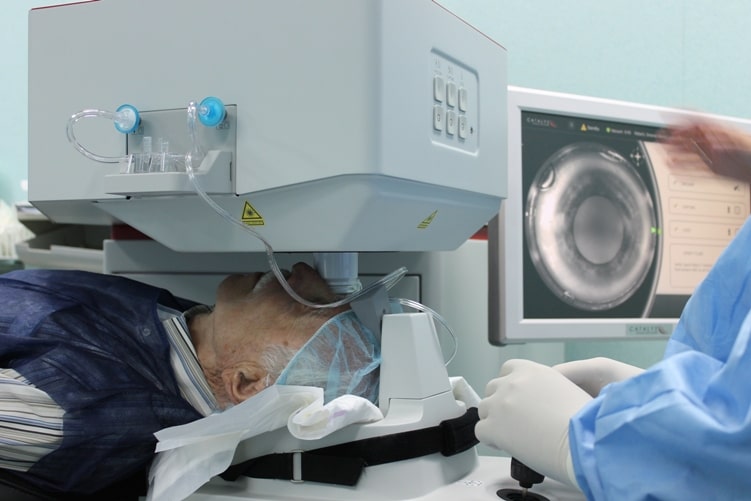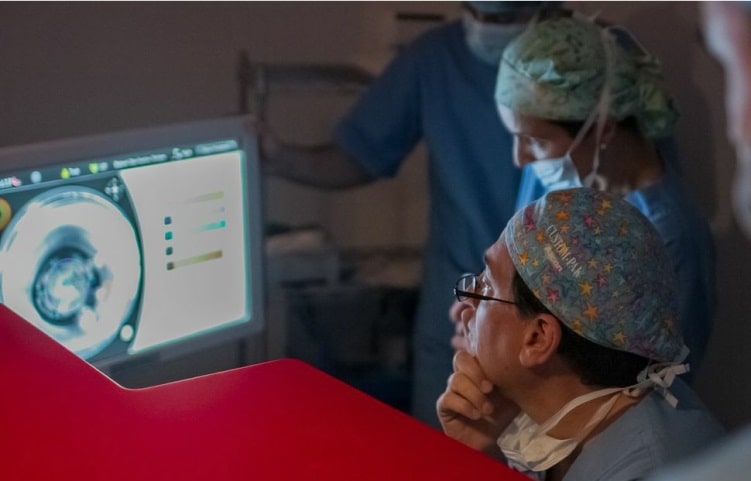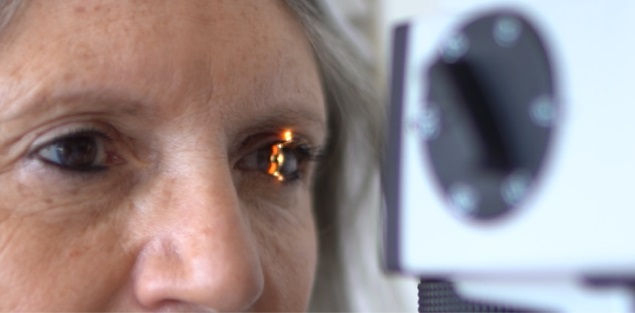Cataracts / Cataracts Laser Surgery
It is possible to treat cataracts with laser surgery
Laser cataract surgery can now be performed using a femtosecond laser platform, known as “femto phaco”, a technology that has revolutionised the lens surgical procedure. This type of surgery is safer and more precise than the traditional manual surgery performed using ultrasound.
Why use femtosecond technology?
This innovative, non-invasive laser surgery technique makes it easier to soften the crystalline lens or cataract, reduces inflammation and contributes towards faster recovery of sight after the operation, making the procedure faster and more straightforward.

The entire procedure may last only 3 minutes, which is much shorter than any other common techniques (phacoemulsification). It also enables us to implant multifocal lenses so that after the surgery our patients can live their lives normally without needing glasses for seeing up close or at a distance.
Femtosecond laser technology is emerging as the best option for implants and more precise centration of multifocal lenses once the opacified natural lens has been removed from the eye.
Advantages of laser cataract surgery
→ Maximum precision
In cataract surgery, the surgeon has to make an incision to access the lens and remove it.
The precision of this incision enables the surgeon to insert the new artificial lens in exactly the right place, so the shape and dimensions must be perfect.
Clinical trials have shown that when this incision is made with femtosecond laser technology, it is approximately ten times more precise than it would be with a manual procedure, which means there is less need for manipulation, less trauma to the eye, less risk of posterior capsule tearing (the main complication associated with the surgery), more precise and effective incision architecture, and faster healing.
→ Extraordinary results
With the Catalys femtosecond laser we are able to improve refractive predictions for patients, leaving more patients free from the need to use glasses and increasing safety and efficacy, with a lower rate of complications and an early recovery.
→ Personalised treatment
Femtosecond laser technology enables the surgeon to design a fully personalised treatment that can be adapted to the shape and size of each eye. This form of surgery is easier to manage, as there are different options for assessment and surgical viewpoints, thus less stress. Therefore, cataract surgery benefits from the ability to make more precise incisions with better control of astigmatism and improved capsulotomy, enabling better centration of the intraocular lens. This is in addition to a decrease in ultrasound energy of up to 90%, leading to fewer side effects and faster healing.

Steps involved in laser cataract surgery
1. We perform the capsulorhexis
We make a circular opening in the lens capsule. The femtosecond laser platform enables us to do this with more precision than we could with the traditional manual method.
2. We break up the crystalline lens
We soften the cataract by breaking up the lens nucleus, which can be done in various ways, according to the surgeon’s preference. This will make it easier to then remove the cataract.
3. We remove the cataract with suction
The surgeon will do this with ultrasound during the second stage of the surgery. Breaking up the cataract with a laser uses less energy, which means less trauma to the eye and faster healing.
4. We implant the intraocular lens
Performing the previous stages with a laser enables us to better centre the intraocular lens.




